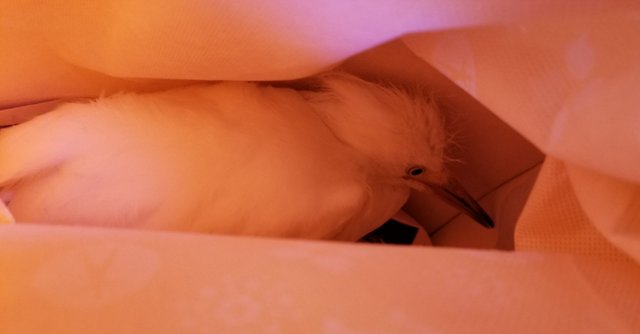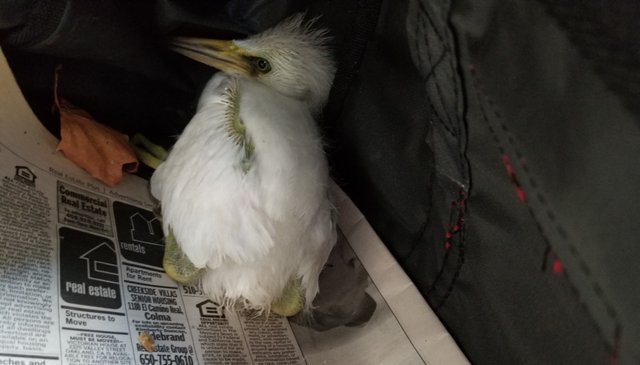First Post: Monitoring Weekend
I have been putting off my first post because I have been unsure of how to start. I thought about introducing myself and my intentions for using this platform, but I have always struggled with composing "about me" sections for social media and never enjoyed those "introduce yourself" posts that are often required for online college classes. The way I figure it, each post will be an opportunity to introduce an aspect of myself (whether I like it or not), and anyone reading a post will learn something about me (whether they like it or not), so why bother agonizing over the perfect intro? With that out of the way, I can now jump into talking about...dinobirds.
This weekend is the last monitoring weekend for the Colonial Waterbird Program at the San Francisco Bay Bird Observatory. This was my first year volunteering for this program, which is in its 37th year. I was initially assigned to monitor a colony of Black-Crowned Night Herons (BCNH)* nesting in a privet tree at a nearby prep school, but I was only able to survey it once before the school unexpectedly cut the tree down (they claimed there were no active nests, but I recorded at least 15+ potentially active nests just a few weeks prior) and I was reassigned to a large colony of Snowy Egrets (SNEG) and Great Egrets (GREG) at Google.
The Google colony is primarily made up of a single row of eight or nine trees along a road that is blocked off during the breeding season. This year there are a few stray SNEG and BCNH nests that ended up in surrounding trees, but the vast majority of nests are concentrated on one side of the road. I met the other two volunteers at the colony this morning at 7:30am, and there was already a great deal of activity going on. Being so late in the season, most of the nests are occupied by offspring in later stages of development, all squabbling and squawking at each other and their parents for food. There was also a Red-Shouldered Hawk (RSHA) perched by one of the occupied trees calling out, and a few crows cawing to each other from various points around the area.
We got to work counting birds and nests, starting at the far end and moving down tree by tree. We weren't at it for long before we noticed a nearly fully-fledged snowy limping in the middle of the road. It was hopping around on its left leg while holding its right leg up, the right foot hanging limply. It was bright and alert as it moved around, so we guessed it must have been a relatively new injury. We watched it hop into the tall weeds on the opposite curb and decided we would continue the survey, and afterward I would take the injured egret to the wildlife center.
We continued the survey and were at the last couple of trees when we discovered another downed SNEG. It was much younger and clearly had fallen out of a nest. We observed it for a little while while we surveyed the last trees and determined it was not being attended to by a parent, and was at risk of being hit by cars or bikes, as it was just about past the roadblock where a few cars had already up to before turning around. I offered to transport the birds, but the only animal carrier I had in my car was the live cat trap I use for TNR, which is not safe or appropriate for birds. I ended up emptying the Craftsman toolbag that houses my jumper cables and using that as a makeshift carrier for the one that had fallen out of a nest, leaving a few inches unzipped for airflow. For the bird with the injured leg, I placed it in a semi-rigid tote and loosely folded over the top so allow some air. I did not want the bird to pop out during the drive, so I placed it inside a second tote and tied the handles together over the top of the first one.


(babby dinobird)
30 minutes later I was at the wildilfe center I used to volunteer at every Sunday, handing both birds over to a staff member and thinking how funny it was that I had quit volunteering there a few months ago, only to end up there on a Sunday morning anyway.
So that was my morning, and an interesting end to my first season of colonial waterbird monitoring. I think I will sign up again next year, as it was a great learning experience. I will probably participate in at least one more SFBBO survey before the end of the year (the annual Shorebird Survey in winter), and I will definitely be out birding again before the end of the week.
Thanks for reading!
If you are interested in learning more about SFBBO and their citizen science programs, visit https://www.sfbbo.org/
My local wildlife rehabilitation center is the Wildlife Center of Silicon Valley https://wcsv.org/
*I will sometimes refer to birds by their 4-letter alpha code after introducing them by their common names - this is mostly because I am in the process of learning these codes and like to use any opportunity to practice them!
Congratulations @passerine! You have completed the following achievement on the Steem blockchain and have been rewarded with new badge(s) :
You can view your badges on your Steem Board and compare to others on the Steem Ranking
If you no longer want to receive notifications, reply to this comment with the word
STOPVote for @Steemitboard as a witness to get one more award and increased upvotes!